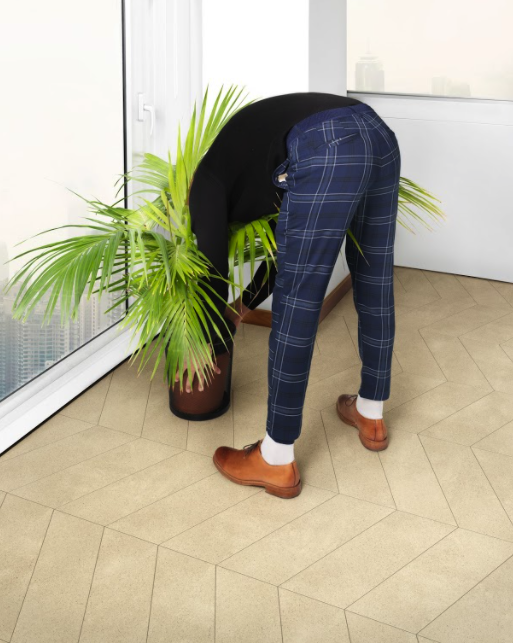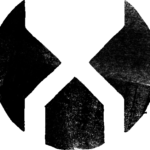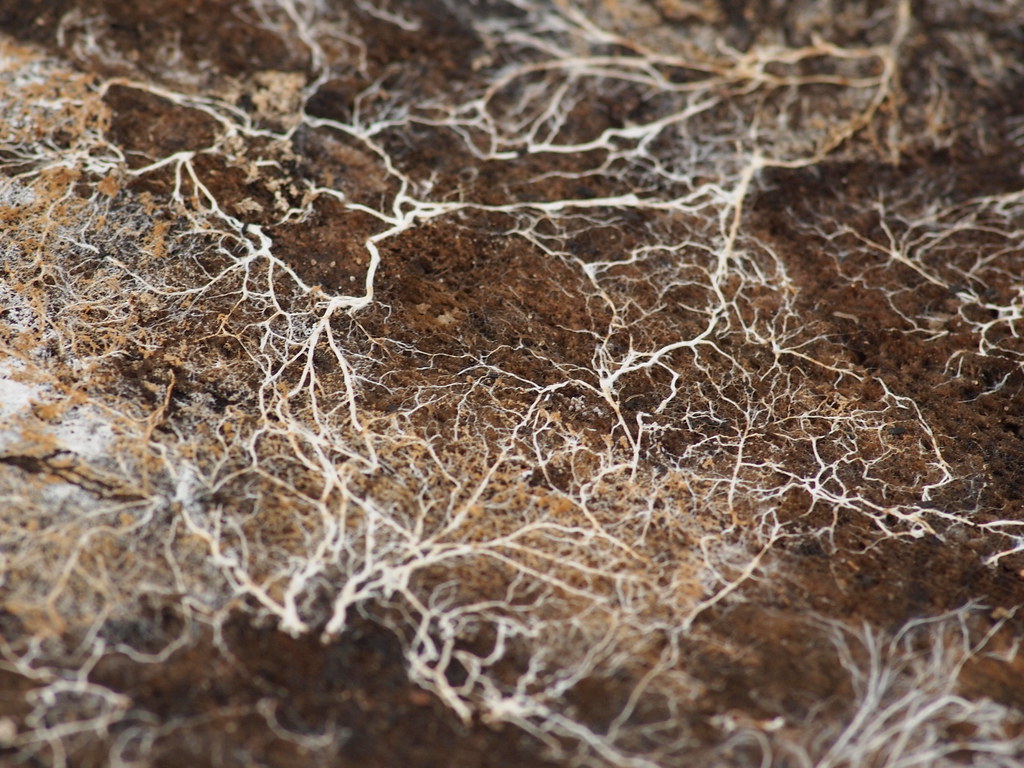From agro-industrial residues to luxury living environments, Mogu Floor is a collection of bio-based resilient tiles for interior design and architecture. A perfect solution to support a fully circular approach within the building industry. Mogu Floor products consist of a high-density, mycelium composite core, combined with an exclusively formulated bio-based covering.
Made from
Selected fungal mycelium, Cotton residues, mycelium and low-value biomasses, such as corn crops, rice straw, spent coffee grounds, discarded seaweed and clam shells.
Production process
- The core: Low-value materials (cotton fibers) are placed in dedicated bags and sterilized in autoclave; then bags are inoculated with selected mycelium strains. Once bags are ready, they are placed in a growing room at controlled temperature & humidity to allow the mycelium growth. As a next step, the fully incubated materials are shredded and an additional organic binder is added. In order to obtain a high density material, compression is applied, also allowing the mycelium to polymerize and aggregate the incubated contents ( functioning as natural glue). The core is then laminated on the top surface with a 1.5 mm of Mogu’s bio-based resin.
- The covering: Discarded oyster, clam and mother of pearl shells are grinded to obtain natural pigments with definite micro dimensions. This powder is then added to the formulation, to allow obtaining a pigmented PU with unprecedented biobased content. As the last step the bio-PU is spread and dried at a specific temperature to achieve a suitable technical performance.
- Lamination: to obtain the final product, the mycelium high density core and the bioPU covering are assembled.
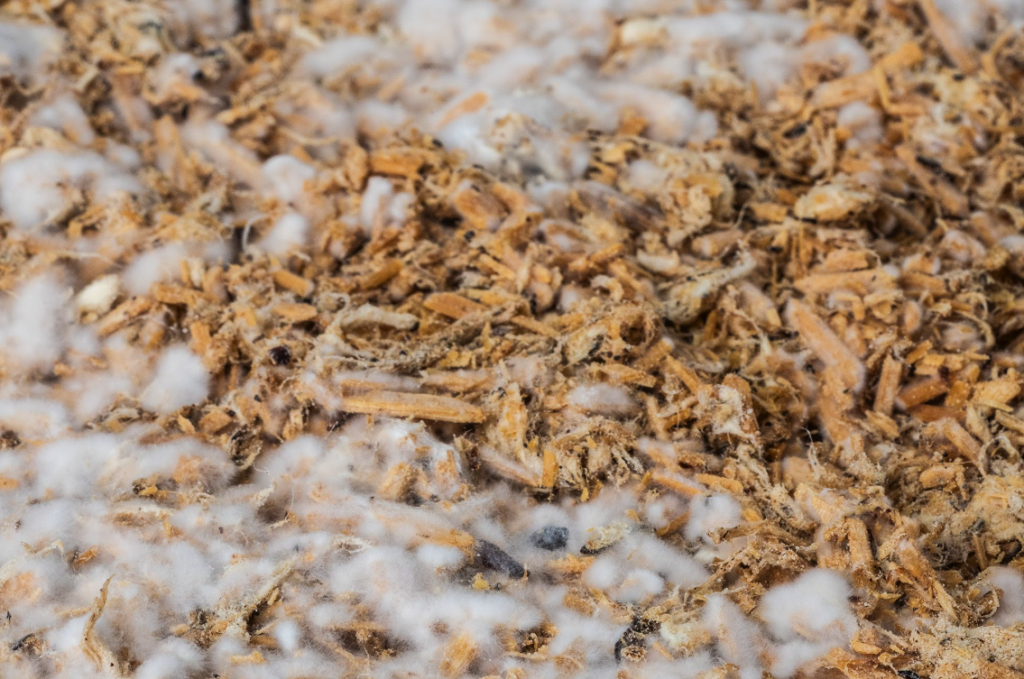
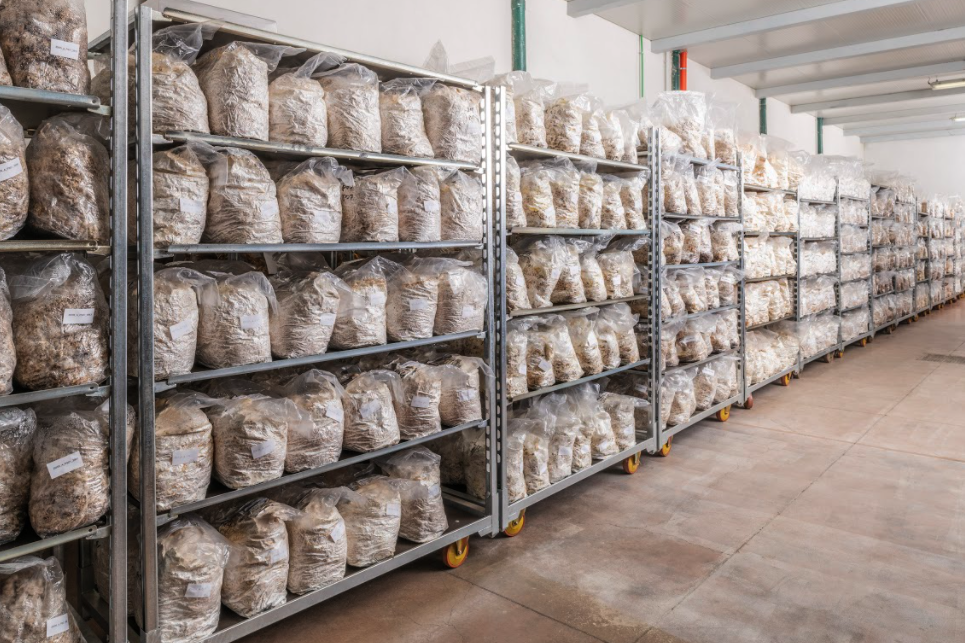
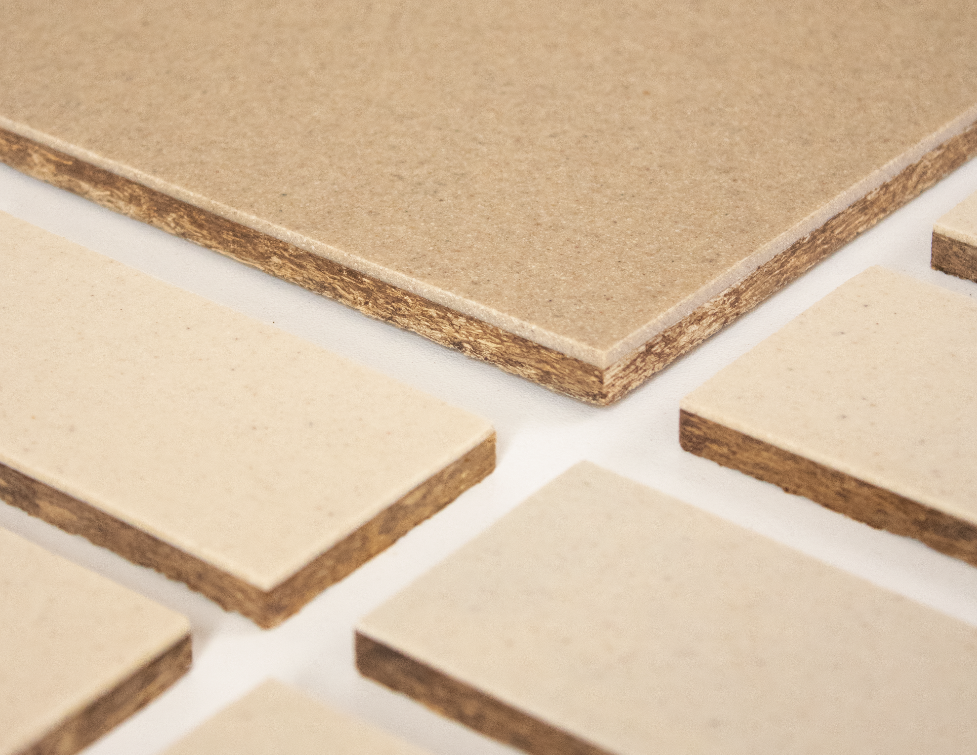
Applied
Luxury living environments, offices and public spaces.
Environmental impact
Mogu Floor tiles consist of a mycelium composite core, coated with a proprietary formulation characterized by an extremely high bio-based content. The proprietary formulation of the bio-based PU coating utilized in Mogu Floor also replaces traditional industrial pigments with low-value biomasses, such as corn crops, rice straw, spent coffee grounds, discarded seaweed, and clamshells.
